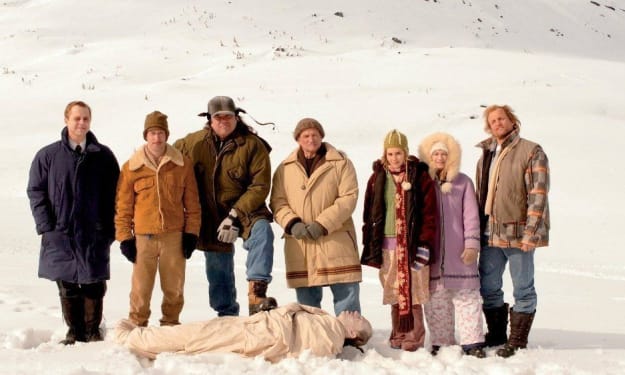
The Legend of Tarzan is a fascinating film. It's a strange blend of truth and fiction; it stars a fictional character created by Edgar Rice Burroughs, whose first adventure was published in 1912. The story carefully positions this near-superhero in a very real setting, an environment that owes far less to fiction than we'd ever believe. So here's the truth behind the movie...
The Scramble For Africa

King Leopold II - the Emperor to Rom's Vader.
The Legend of Tarzan opens with a mention of a Berlin Conference of 1884. That conference isn't imagined - it really happened. European powers had long been fascinated with the African continent, recognizing it as a source of potential wealth, but the establishment of the German Republic changed the balance of power. Seeking to resolve these issues, King Leopold II of Belgium persuaded 14 countries - mostly European, but also including the Turkish Ottoman Empire and the United States - to convene for a conference in Berlin.
Just as in The Legend of Tarzan, the Berlin Conference confirmed some two million square kilometers as essentially the private property of Leopold II. So, while other countries strove to increase their African influence in the so-called 'Scramble for Africa', Leopold II really did claim ownership of this vast area. Just as in The Legend of Tarzan, Leopold II's rule of the Belgian Freestate (as the Belgian Congo was then known) really did crumble as it became heavily indebted. The film is completely accurate in referencing Belgium as establishing 50 forts across the Belgian Freestate, largely manned by mercenaries.
King Leopold II's Management Of The Belgian Freestate

King Leopold's deadly servant. [Credit: Warner Bros.]
The Legend of Tarzan presents a vision of illegal atrocities conducted in Belgium, and sadly it's not far wrong. As George Washington Williams wrote:
"Your Majesty’s Government is excessively cruel to its prisoners, condemning them, for the slightest offences, to the chain gang, the like of which can not be seen in any other Government in the civilized or uncivilized world. Often these ox-chains eat into the necks of the prisoners and produce sores about which the flies circle, aggravating the running wound; so the prisoner is constantly worried. These poor creatures are frequently beaten with a dried piece of hippopotamus skin, called a “chicote”, and usually the blood flows at every stroke when well laid on. But the cruelties visited upon soldiers and workmen are not to be compared with the sufferings of the poor natives who, upon the slightest pretext, are thrust into the wretched prisons here in the Upper River. I cannot deal with the dimensions of these prisons in this letter, but will do so in my report to my Government."
Léon Auguste Théophile Rom (the villain of The Legend of Tarzan, played by Christoph Waltz) was a particularly nasty piece of work. He was known as the 'Butcher of the Congo', and - under Leopold II's authority - was responsible for the deaths of some 10 million Africans. He kept a flower bed rigged with human heads, and had gallows permanently erected in front of the Stanley Falls station. Sadly, in real life he didn't fall foul of Tarzan.
George Washington Williams

Samuel Lee Jackson plays George Washington Williams. [Credit: Warner Bros.]
I've already made mention of George Washington Williams, who is essentially Tarzan's sidekick in the film, played by Samuel L Jackson. Williams too is a real historical figure. The backstory given in The Legend of Tarzan is entirely true, but doesn't do the man justice. After the Civil War, Williams graduated from Newton Theological College, the first African-American to do so. He was ordained as a Baptist minister. He was elected to the Ohio State Legislature, and chronicled the histories of African-Americans in the United States.
Just as in The Legends of Tarzan, Williams defied King Leopold II and headed into the Belgian Freestate. There, he witnessed the regime's atrocities firsthand, and - upon his return - began a campaign to change the treatment of the African natives. His first step was to write an open letter to the King, in which he condemned the cruelty of King Leopold II's regime. Incredibly, The Legend of Tarzan even quotes from that letter:
"Every charge which I am about to bring against your Majesty’s personal Government in the Congo has been carefully investigated; a list of competent and veracious witnesses, documents, letters, official records and data has been faithfully prepared, which will be deposited with Her Britannic Majesty’s Secretary of State for Foreign Affairs, until such time as an International Commission can be created with power to send for persons and papers, to administer oaths, and attest the truth or falsity of these charges."

[Credit: Warner Bros.]
About the Creator
Tom Bacon
A prolific writer and film fan, Tom has a deep love of the superhero genre.






Comments
There are no comments for this story
Be the first to respond and start the conversation.